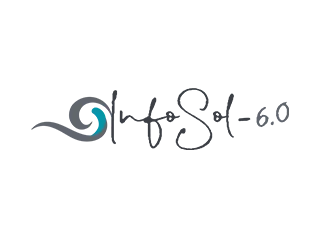In this process, well-executed public relations play a decisive role: they not only help make messages visible but also turn them into valuable connections—reinforcing perceptions of transparency, purpose, and authenticity.
Trust also drives results
A Deloitte study reveals that customers who trust a brand are 88% more likely to repurchase, demonstrating that trust is no longer an intangible value; it has become a driver of loyalty and business growth.
Moreover, trust is reinforced in the digital landscape, where responsible data management, ethical communication, and consistency across social platforms are essential to maintain credibility with informed and demanding audiences. In this context, public relations serve as the strategic tool that connects reputation, purpose, and performance.
Below, we explore six ways public relations strengthen a brand’s narrative, connection, and credibility, proving that trust is built through strategy, consistency, and real value.
6 ways Public Relations strengthens a brand’s narrative, connection, and credibility
1. Communicate with purpose and coherence to inspire trust
At the core of every credible brand is a clear and well-communicated purpose. Public relations help translate that purpose into consistent, aligned, and relevant messaging across all channels and spokespersons.
Consistency in what is said, how it’s said, and when it’s said is essential for building a strong reputation.
2. Position leaders as credible and trustworthy spokespersons
Leaders are not only the face of the organization — they are their voice. PR equips them to communicate with authority, empathy, and clarity, strengthening how the brand is perceived by its stakeholders.
A well-prepared spokesperson conveys strength, purpose, and authenticity.
3. Appear in media outlets that reinforce brand credibility
Earned media — such as interviews, bylines, or mentions in credible outlets — reinforces a brand’s legitimacy. It serves as third-party validation or social proof: when respected platforms amplify your message, credibility grows.
The goal isn’t to be everywhere, but to be in the right places with the right message.
DOWNLOAD OUR FREE EBOOK
Turn your communication into tangible results.

4. Build authentic relationships to strengthen business trust
Public relations serve as a bridge between the organization and its key audiences—customers, employees, investors, regulators, and media.
These relationships are built through active listening, consistent presence, and communication that adds value.
Trust isn’t demanded. It’s earned through listening, relevance, and consistency.
5. Be transparent — especially in critical moments
Transparency is a powerful driver of credibility. During challenging times, PR enables organizations to communicate with honesty, take accountability, and uphold their reputation.
In the age of artificial intelligence and hyperconnectivity, transparency also means digital clarity: explaining how data is handled, how content is created, and how technology tools are used to promote responsible communication.
A brand that communicates clearly—both operationally and digitally—projects integrity and leadership, strengthening its digital reputation and brand credibility across all audiences.
Brands that communicate clearly in difficult moments demonstrate integrity and leadership.
6. Create content that educates, positions, and elevates digital reputation
Content that informs, clarifies, or inspires has far greater impact than promotional messaging. PR enables the development and distribution of content that delivers real value to strategic audiences.
In a digital environment increasingly shaped by algorithms and AI, authentic, useful, and transparent content not only performs better but also reinforces the perception of a trustworthy brand with a strong reputation.
Every piece of content either strengthens or weakens your brand’s credibility.
Trust and credibility are built, not improvised
Public relations are much more than a visibility tactic—they are a key driver of brand trust, leadership positioning, and lasting relationships with audiences that truly matter.
When a company manages its communication with strategy and purpose, it strengthens its brand credibility and turns business trust into an asset that drives reputation and sustainable growth.
In an era of fleeting attention, the most remembered brands aren’t the loudest—they’re the most trustworthy.
Ready to build a trusted brand with lasting reputation?
FAQs
1. What is trust in a business?
Trust in a business is the confidence that customers, partners, and employees have that a company delivers on its promises and acts with purpose. It’s built through consistency, transparency, and continuous communication. When a brand has a clear purpose and reflects it through action, it fosters authentic relationships, loyalty, and a positive reputation that extends beyond products or services.
2. How is brand trust built?
Trust is built when a brand acts with consistency and purpose in every interaction. It’s not enough to say—it must be demonstrated: by keeping promises, communicating transparently, and offering consistently positive experiences. Creating authentic, valuable content that reflects company values also plays a major role. When actions and messages align, trust solidifies into a sustainable competitive advantage.
3. How can brands build trustworthy relationships with customers?
Trust-based relationships are built through active listening, empathy, and consistency. Listening to customers—on social media, in the press, or through direct channels—enables agile and empathetic responses. Keeping promises, communicating transparently, and personalizing experiences strengthen bonds. When a brand demonstrates understanding and appreciation, it builds long-lasting relationships grounded in credibility, satisfaction, and genuine connection.
4. How can brand trust help my company stand out in a saturated market?
In a crowded marketplace, trust is what truly differentiates a brand. A company that communicates consistently, keeps its promises, and maintains a positive reputation becomes a benchmark for credibility. That trust fuels preference, attracts valuable partnerships, and enhances digital visibility. In saturated markets, trust doesn’t just open doors—it sustains growth and long-term loyalty.
5. What’s the difference between trust and credibility in a brand?
Credibility is earned when a brand demonstrates knowledge, expertise, and consistency in what it communicates—it’s the perception that “it knows what it’s talking about.” Trust, on the other hand, arises when people believe the brand will act with integrity and fulfill its promises. Credibility opens the door, but trust keeps it open—together, they strengthen reputation and build enduring relationships with audiences.





